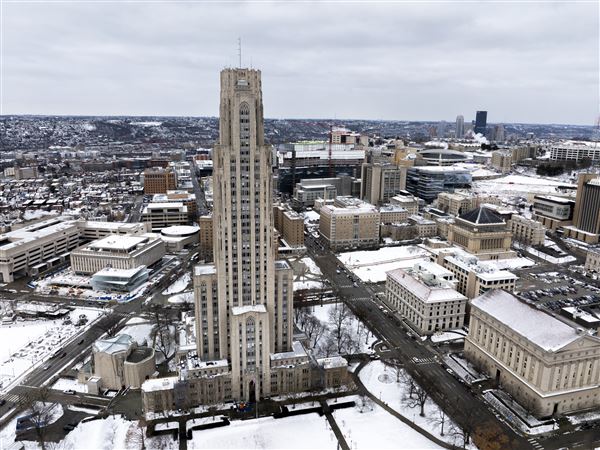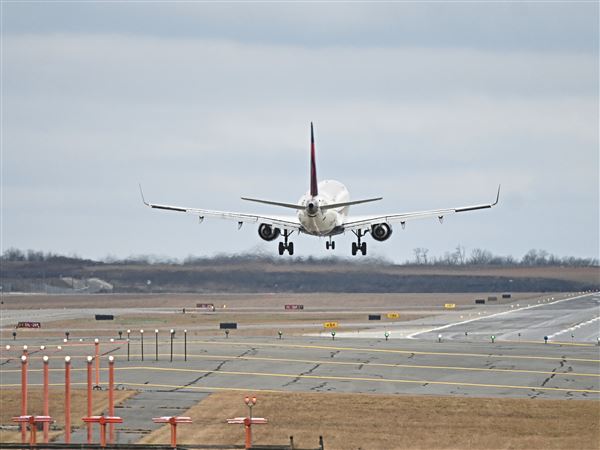Pennsylvania’s latest plan for cutting pollution to the Chesapeake Bay is still inadequate, so the U.S. Environmental Protection Agency is stepping up inspection and enforcement of water pollution sources across the state, including in Western Pa., the agency announced on Monday.
Federal regulators said that the state’s plan for reducing nutrient pollution flowing to the bay, especially from farms, again falls short of what is necessary to restore the health of the nation’s largest estuary.
It is the second time the EPA has found this edition of Pennsylvania’s Watershed Implementation Plan deficient.
As a consequence, the EPA said it will put a stricter compliance focus on all water pollution sources in Pennsylvania, including those outside the Chesapeake Bay watershed, such as municipal sewer and stormwater systems, industrial dischargers and farms in southwestern Pennsylvania.
Pennsylvania and all of the states in the bay watershed face a 2025 deadline to cut their nitrogen, phosphorus and sediment pollution, which degrades the bay’s water quality and creates oxygen-depleted “dead zones” where fish and other marine life can’t survive.
The pollution also damages its local conduits — Pennsylvania’s streams and rivers — nearly 28,000 miles of which are considered impaired for aquatic life, recreation, drinking water and other uses. Forty-three of Pennsylvania’s 67 counties are in the Chesapeake Bay watershed and Pennsylvania is the bay’s largest source of nitrogen pollution.
“Pennsylvania has really struggled to come up with plans and implementation to meet the goals,” EPA’s Mid-Atlantic Regional Administrator Adam Ortiz said. “Under our administration, we’re just drawing the line because we need to see some change.”
The Wolf administration submitted the most recent plan in December and announced that it would meet all of Pennsylvania’s share of the pollution reduction goals “provided funding support is in place.”
But the funding is not in place: The Pa. Department of Environmental Protection has identified a roughly $324 million annual shortfall. Federal regulators say that funding gap is a primary failure of the state’s plan.
Federal and state regulators are also at odds over years-old pollution reduction measures in place across the watershed. Pennsylvania contends that many are still effective and should be counted toward its cleanup progress while the EPA says they are outdated and can’t be considered.
The EPA gave Pennsylvania 90 days to revise its plan to meet pollution targets. Pennsylvania’s last draft of the plan only met 70% of its nitrogen reduction target, leaving it 9.7 million pounds short of the goal, the EPA found. Much of the shortfall is attributed to uncontrolled manure runoff into streams and a lack of dedicated state support and funds for farms to install measures — like fences, cover crops and stream buffers — to reduce that runoff.
In Western Pennsylvania, which is largely outside of the bay watershed, Mr. Ortiz said communities can expect increased scrutiny of new and existing water pollution permits, closer monitoring of municipalities’ compliance with legal agreements for cleaning up stormwater and sewer systems, and new oversight of suspected pollution sources, including farms and industry, that are close to waterways.
“It’s going to be a lot of tough love,” he said. “We’re open to more consent orders and legal agreements, as well as fines and other enforcement actions.”
He said the duration of the EPA’s enhanced oversight in Pennsylvania will depend on the state’s actions to reduce pollution.
“Pennsylvania has made noteworthy progress in recent years and key partnerships are in place,” he said. “State agencies, counties, farmers, partners and nonprofits are on board and have put in a tremendous effort. What’s missing are improved manure control policies and dependable state funding for agriculture cost-share programs for farmers. These are measures other states have had for a long time.”
Pa. DEP spokesperson Neil Shader said state regulators are “disappointed with EPA’s overall findings” and noted “Pennsylvania has taken steps to significantly accelerate improvement of local waters” through grants, county partnerships and technical support.
He said DEP and its partners “will continue to work with leaders in the legislature to clean up Pennsylvania waterways and fulfill our commitment to reducing pollution in the Chesapeake Bay watershed.”
Bipartisan bills proposed in the Pennsylvania Legislature would dedicate hundreds of million of dollars from the state’s unspent federal pandemic relief funds to watershed restoration and water quality improvements statewide, with a focus on the Chesapeake Bay watershed. The bills have not progressed in months, but could be included in state budget negotiations this spring.
Laura Legere: llegere@post-gazette.com.
First Published: April 18, 2022, 9:58 p.m.


















